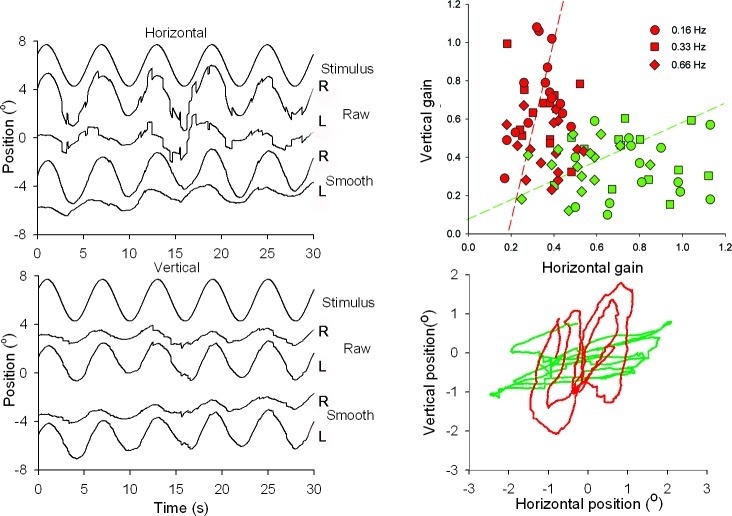Figure 2. .
Eye movements in response to orthogonally oscillating patterns (f = 0.16 Hz, A = 1.72°). Left panels show from top to bottom: stimulus motion, and horizontal and vertical movements of right (R) and left (L) eyes. Positive values of horizontal and vertical eye movement traces correspond to rightward and upward positions, respectively. Traces labeled “Raw” show eye movements with saccades, whereas in the traces labeled “Smooth,” saccades have been removed digitally. The XY-plot at the lower right panel shows an example of the horizontal and vertical excursions of the smooth components of the two eyes. The top right panel shows a scatter plot of the horizontal versus vertical gain of left (red symbols) and right (green symbols) eyes of all six subjects for three different frequencies (circles 0.16 Hz, squares 0.33 Hz, and diamonds 0.66 Hz). Pooled data points for all three frequencies were fitted with an orthogonal fit procedure, minimizing errors in X and Y direction.

